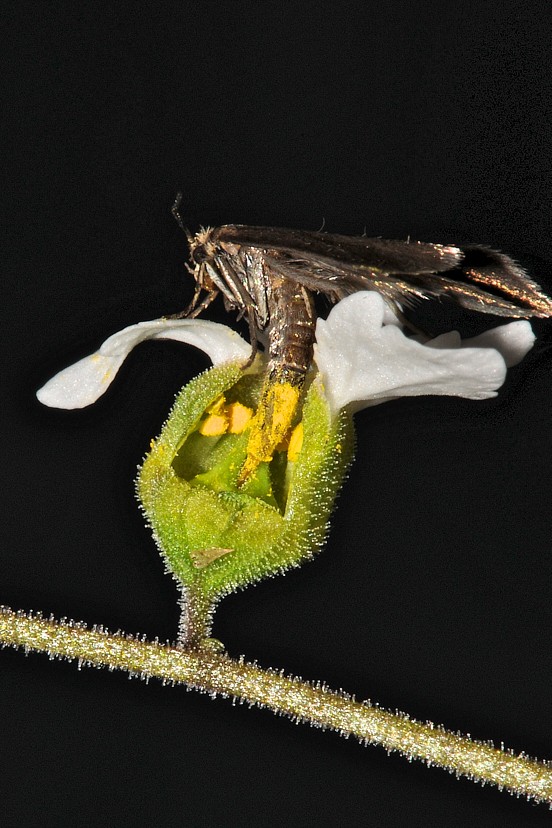Extreme variations found in flower scent evolution
By Krisy Gashler
Biologists have often focused on the color of a flower or the shape of a leaf in studying the evolution of plants. But many of the organisms that interact and co-evolve with plants are nearsighted or colorblind, and rely more on other senses, especially smell.
As a graduate student, Robert Raguso, now a professor of neurobiology and behavior, noticed the gap of information on scent in evolutionary biology literature and has spent his career filling it.
In the most extensive standardized survey of floral scent ever published, Raguso and his colleagues discovered that geographically separated populations of the same plant species have evolved to produce dramatically different scents to attract pollinators, a finding that underscores the importance of conserving multiple populations in order to preserve a species.
Raguso collaborated with scientists from Lund University in Sweden, the University of California, Santa Cruz, and the University of Sao Paulo in Brazil on the study, “Extreme Diversification of Floral Volatiles Within and Among Species of Lithophragma (Saxifragaceae),” published Feb. 14 in Proceedings of the National Academy of Sciences.
Throughout western North America, woodland star plants (Lithophragma) have co-evolved in concert with Greya moths. The moths lay eggs inside the woodland stars, and the growing moth larvae feed on the plants’ seeds, making Greyas a prime predator. However, while laying their eggs, the Greyas also pollinate the woodland stars, making them a crucial reproductive partner.
“If you think of co-evolution as an arms race, these woodland stars and Greya moths are locked into this bad peace treaty,” Raguso said. “The plants have to pay a tax and let the moths eat some of their seeds, because if they don’t, then no one will pollinate them.”
In the study, the researchers collected floral scent samples from all 12 recognized species and subspecies of woodland star plants, in 94 separate populations, from California to Washington state.
The researchers expected to find some differences in floral bouquets between populations, but they were surprised by the extent of the differences. Yucca plants, for example, emit only a handful of scent compounds from only two distinct groups. Woodland stars emit scents from 20 to 50 different compounds from nearly all known biochemical groups of floral scents.
“The most fascinating result in this paper is that almost every population we studied is different in its scent chemistry,” Raguso said. “The differences are on a level that we would expect from different families of plants, not different populations of the same species.”
One reason for the tremendous variation in floral scents among woodland stars may be that Greya moths never travel more than a short distance from where they are born, while the closely related Yucca moths can travel for miles while carrying Yucca pollen, which could mitigate local genetic differences. Another explanation is that while many populations of woodland star are stuck with the moths as their sole pollinator, other populations of the plant have better options – bees or flies that pollinate without laying eggs.
In a changing climate, Raguso points to woodland stars as an example of how different populations of the same species can adjust their adaptations, based on their local conditions. Some of those adaptations might enable the plants to survive a dramatic change in climate when other populations might be lost. Preserving multiple populations of a species is therefore critical to preserving the species itself.
“What would happen if we lost woodland stars and Greya moths?” Raguso said. “We don’t know. There could be impacts on other plant, insect or animal species, or changes in nitrogen fixation in the soil. These fine-tuned interactions have a lot of hidden, unanticipated effects that we don’t know about until we lose them.”
Krisy Gashler is a freelance writer for the College of Agriculture and Life Sciences.
Media Contact
Get Cornell news delivered right to your inbox.
Subscribe

